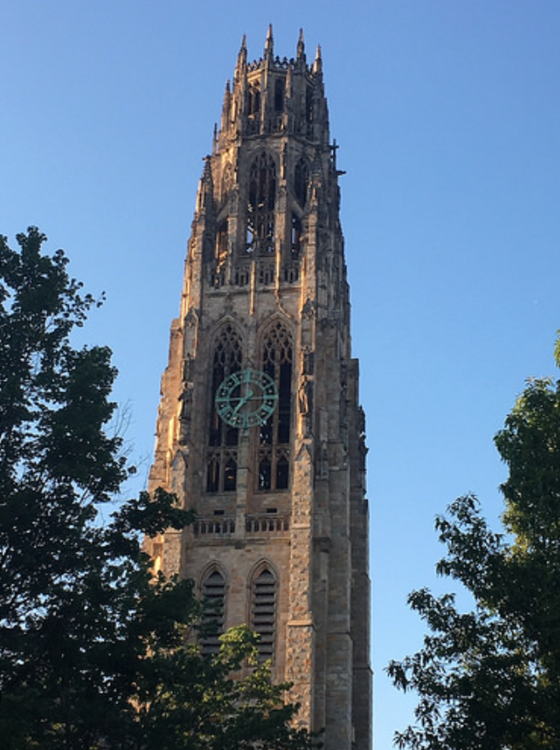


Harkness Tower is a prominent Collegiate Gothic structure at Yale University. The tower was constructed between 1917 and 1921 as part of the Memorial Quadrangle donated to Yale by Anna M. Harkness in honor of her recently deceased son, Charles William Harkness, Yale class of 1883, and the second son of Stephen V. Harkness, an early investor in the company that became Standard Oil. It was designed by James Gamble Rogers, who designed many of Yale's "Collegiate Gothic" structures.
Rogers said his design for the tower was inspired by "Boston Stump," the 272-foot (83 m) tower of the parish church of St Botolph in Boston, England. The tower contains the Yale Memorial Carillon, a 54-bell carillon. It is a transposing instrument (the C bell sounds a concert B). Ten bells were installed in 1922; 44 were added in 1966. The instrument is played by members of a student-run group set up for the purpose, the Yale Guild of Carillonneurs, and selected guest carillonneurs.
Harkness Tower is 216 feet (66 m) tall, one foot for each year since Yale's founding at the time it was built. From a square base, it rises in stages to a double stone crown on an octagonal base, and at the top there are stone pinnacles. Harkness Tower is the second tallest free-standing stone structure in the country behind Washington Monument in Washington DC.
Harkness Tower is open to public. The tower balcony under the clock face offers a breathtaking view of the Yale campus and New Haven downtown. The tower is a Yale landmark and a must-see on your Yale itinerary.